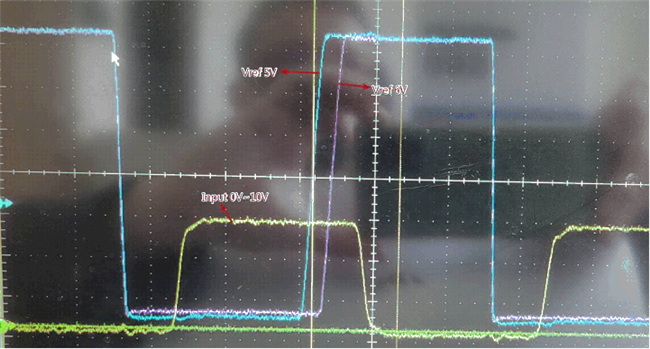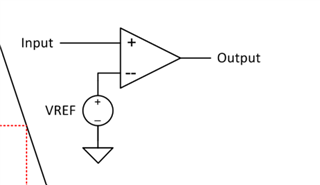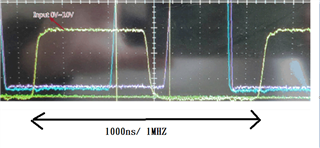Other Parts Discussed in Thread: LM311, , TL3016, TLV3601, TLV3501, TINA-TI
hi sir
use the TLV1805DBVR to be a comparator, one input is a square wave, another pin input different voltage from 5~9v
the output wave will have longer propagation time when input voltage rising , as below figure
could you advise it? thanks
i need a comparator which output waveform is less propagation delay, when different voltage from 5~9v








